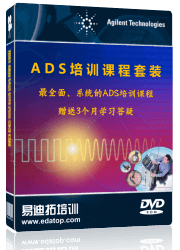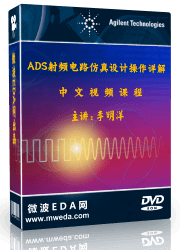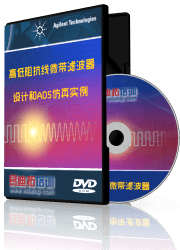- 易迪拓培训,专注于微波、射频、天线设计工程师的培养
Does ADS has a easy way to simulate the CLASS-G audio amp THD?
It's really difficult to simulate THD in ADS?
Does any one has a example?
Audio signal: 100Hz~20KHz, Class-G clock 1.6MHz, load is 16 ohm + 33uH.
The link is audio input-->Class G amp-->load
I know use FFT can do it, but I am not familiar with MATLAB. I guess ADS can also process it.
Any comments is welcome.
You can of course use ADS for audio amplifier simulations.
THD is the sum of harmonics' amplitudes.( Look at THD formulae)So, if you do a HB simulation, you'll find the amplitudes of the harmonics and ADS won't know how type of circuit you simulate.There is no practical difference to simulate a Microwave amplifier and Audio amplifier from aspect of simulation.There is maybe a measurement expression that computes THD directly,I don't know but you can create an expression if there isn't any.
ADS is essentially general purpose simulator.You can simulate even DC or Lightwave..almost same..
As BigBoss says there is no reason that ADS couldn't be used to perform this type of analysis as long as a suitable simulator was used. Harmonic Balance could certainly do it as it is able to generate the harmonic output tones that would be generated from a single pure sinusoidal tone at the input of the amplifier. The frequency of that input tone could be anything from 1 Hz to a very large number of Hz. Linear simulation cannot do it as it is single tone in for the same tone out.
The main difference though is that any simulation like this treats any signal spectrum, the audio spectrum in this case, as a series of discrete harmonically related tones and not a continuous spectrum.
Given that THD is the ratio of all higher harmonic output tones to the first harmonic tone the math is quite easy:
THD = (P2nd + P3rd + P4th + ... + PNth)/P1st
as long as N is suitably large. This simplifies to:
THD = (Ptotal - P1st)/P1st
So two power measurement, some simple math and it is done. In the case of the fundimental tone being 1 kHz and the simulation using up to the 20th harmonics, for 20 kHz, something like this would work:

Hi, Bigboss and RealAEL,
Thank you very much.
Hi, Bigboss and RealAEL,
Could you do me a favor to answer the questions in this post?
https://www.edaboard.com/thread286509.html
Many thanks.
申明:网友回复良莠不齐,仅供参考。如需专业帮助,请学习易迪拓培训专家讲授的ADS视频培训课程。
上一篇:Is it appropriate to drive 5 loads with one single video amplifier?
下一篇:how learn Advanced Design System Agilent ADS
ADS中文视频培训教程 | More...
 国内最全面、最专业的Agilent ADS培训课程,可以帮助您从零开始,全面系统学习ADS设计应用【More..】
国内最全面、最专业的Agilent ADS培训课程,可以帮助您从零开始,全面系统学习ADS设计应用【More..】
- Agilent ADS教学培训课程套装
- 两周学会ADS2011、ADS2013视频教程
- ADS2012、ADS2013射频电路设计详解
- ADS高低阻抗线微带滤波器设计培训教程
- ADS混频器仿真分析实例视频培训课程
- ADS Momentum电磁仿真设计视频课程
- ADS射频电路与通信系统设计高级培训
- ADS Layout和电磁仿真设计培训视频
- ADS Workspace and Simulators Training Course
- ADS Circuit Simulation Training Course
- ADS Layout and EM Simulation Training Course
- Agilent ADS 内部原版培训教材合集









 沪公网安备 31011202014168号
沪公网安备 31011202014168号
 1427313829
1427313829 旺旺在线
旺旺在线 Skype Online
Skype Online 13761612886
13761612886 官方淘宝店
官方淘宝店
